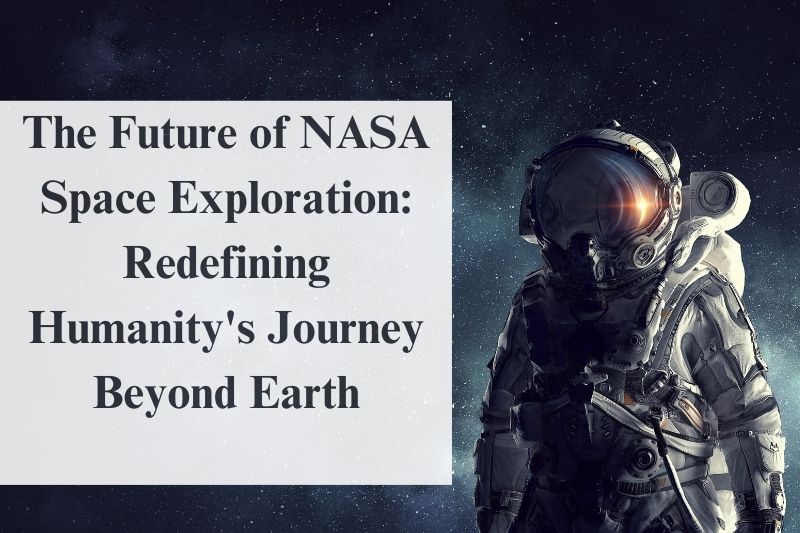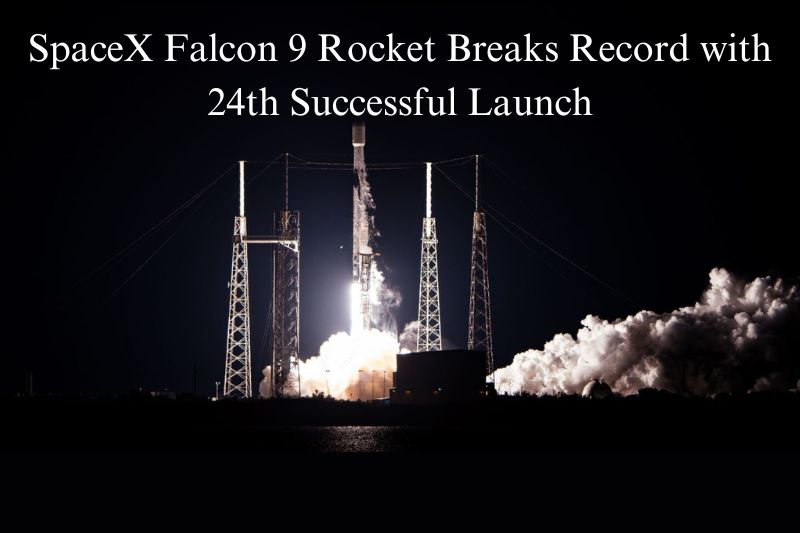NASA’s future space exploration missions promise to reshape humanity’s understanding of space and its potential. With ambitious missions to Mars, the Moon, and beyond, NASA is at the cutting edge of technological advancements and space science. Through initiatives like the Artemis Program and deep-space exploration efforts, NASA aims to establish a sustainable human presence on Mars, push the boundaries of our solar system, and unlock the mysteries of the universe.
As the space agency invests in robotic missions, lunar bases, and innovative propulsion systems, it is laying the groundwork for a new era in space exploration. With key technologies in nuclear propulsion, autonomous robotics, and extraterrestrial life research, NASA is moving closer to uncovering the secrets of distant planets and celestial bodies. International partnerships and collaborations with private companies like SpaceX and Boeing are accelerating these efforts, making space exploration more accessible and cost-effective.
In this article, we’ll explore NASA’s future space exploration missions, technological innovations, and the search for extraterrestrial life, all of which are pivotal in humanity’s quest to explore the cosmos.
Mars Exploration: Paving the Way for Human Life on the Red Planet
Mars has long been a target for NASA’s space exploration missions due to its potential as a second home for humanity. NASA’s long-term vision focuses on sending astronauts to Mars, building sustainable habitats, and ensuring the technology necessary for a permanent human presence.
Artemis and Mars Missions
While the Artemis program is initially focused on returning humans to the Moon, it serves as a stepping stone for Mars. Artemis aims to establish a sustainable lunar base that will support the eventual human mission to Mars. Artemis is expected to deliver astronauts to the Moon by 2025, preparing NASA for a Mars mission by the 2030s.
Mars Sample Return Mission
The Mars Sample Return Mission, scheduled to launch in the late 2020s, will collect soil and rock samples from Mars and return them to Earth for analysis. This mission is pivotal for understanding Mars’ past potential for habitability, driving the next phase of NASA space exploration toward human missions.
Developing Mars Habitats
One of the critical challenges for NASA’s future space exploration missions is creating habitats capable of supporting human life on Mars. NASA is working on technologies to provide oxygen, water, and food for astronauts, ensuring they can survive in Mars’ hostile environment for extended periods.
Testing Propulsion Systems
The development of nuclear thermal propulsion (NTP) systems is underway, promising faster travel times to Mars. NASA plans to test NTP technology on its Dragonfly spacecraft, scheduled to launch in 2027, reducing the time required for deep-space travel.
Building Self-Sustaining Martian Communities
Beyond survival, NASA’s future space exploration missions are focused on creating self-sustaining Martian colonies. Innovations in in-situ resource utilization (ISRU) will allow astronauts to extract water and oxygen from Mars’ atmosphere, reducing reliance on Earth for supplies.
Mars Rover Perseverance
Launched in 2020, Perseverance is currently collecting data and testing technology for future human missions. It is also searching for signs of ancient life on Mars, contributing essential data for future Mars explorations.
Robotic Exploration for Site Selection
NASA’s Perseverance rover and future robotic missions will continue to scout Mars for suitable landing sites and resources for human exploration. These robotic missions are critical to NASA’s future space exploration missions, ensuring that astronauts can land safely on Mars.
Deep-Space Missions: Venturing Beyond Our Solar System
NASA’s deep-space exploration missions are designed to go beyond our solar system and seek out new frontiers. These missions will provide critical data on distant planets, stars, and galaxies, helping humanity understand the cosmos on an unprecedented scale.
Voyager 1 and 2
Launched in 1977, Voyager 1 is now the most distant human-made object in space. Voyager’s mission continues to send data back to Earth, providing insights into interstellar space. Voyager 2 entered interstellar space in 2018, and is providing similar data, marking milestones for NASA’s future space exploration missions.
James Webb Space Telescope (JWST)
Scheduled for deployment in 2021, JWST will revolutionize deep-space exploration. It will provide unprecedented images of distant exoplanets and galaxies, helping astronomers understand the universe’s origin and evolution. The JWST will provide critical data for NASA space exploration missions aimed at discovering life beyond Earth.
Europa Clipper Mission
NASA’s Europa Clipper, slated for a 2024 launch, will explore Jupiter’s moon Europa, which has a subsurface ocean that could harbor life. This mission is a key part of NASA space exploration, aiming to explore one of the most intriguing potential habitats for extraterrestrial life.
New Horizons: The Edge of the Solar System
New Horizons, which made history with its flyby of Pluto in 2015, is now exploring the Kuiper Belt. This mission continues to gather valuable information about the outermost edges of our solar system, providing essential data for NASA’s future space exploration missions in the coming decades.
Interstellar Probe
Planned for the late 2020s, NASA’s Interstellar Probe will travel beyond the Voyager missions’ paths, reaching the interstellar medium to study the effects of cosmic radiation. This mission will push NASA space exploration into truly unknown territories.
Orion Deep-Space Capsule
Orion is NASA’s spacecraft designed for long-duration space missions, including travel to Mars and deep space. It will provide astronauts with the necessary life support and travel capabilities for missions that extend beyond Earth’s orbit.
Titan Dragonfly Mission
NASA’s Dragonfly mission, scheduled for 2027, will explore Saturn’s moon Titan. By studying Titan’s atmosphere and potential for life, this mission will advance NASA space exploration goals related to understanding the building blocks of life beyond Earth.
Technological Innovations: Advancing NASA’s future space exploration missions
For NASA to reach its ambitious goals, it must continue to push the envelope on technology. The next generation of NASA space exploration will rely heavily on technological advancements that allow for faster, safer, and more efficient missions.
Nuclear Thermal Propulsion
One of the most promising advancements in space travel is nuclear thermal propulsion (NTP). This technology, currently being developed by NASA, will significantly reduce the time it takes to travel to Mars, enhancing the feasibility of human missions.
AI and Robotics for Autonomous Missions
AI-powered robotic systems will play a key role in NASA’s future space exploration missions. These systems will enable autonomous decision-making and operations, crucial for missions to distant planets and moons where communication with Earth may be delayed.
Solar Sailing for Deep-Space Exploration
Solar sails, which use light pressure from the sun to propel spacecraft, offer a potentially revolutionary method of propulsion. NASA plans to develop solar sailing technology to reach the outer solar system more efficiently.
Space Habitats for Long-Term Missions
NASA is working on modular space habitats that could support astronauts on missions lasting several years. These self-sustaining environments will include systems to recycle water, air, and food, reducing the need to resupply from Earth.
3D Printing in Space
The use of 3D printing in space will allow astronauts to manufacture tools, spare parts, and even habitat components during long-duration missions. This capability is a cornerstone of NASA space exploration efforts to make deep-space exploration sustainable.
In-Situ Resource Utilization (ISRU)
ISRU technologies are being developed to extract water, oxygen, and building materials from the Martian environment, reducing the need to transport resources from Earth.
Spacecraft Reusability
NASA is working to develop reusable spacecraft, much like SpaceX’s Falcon rockets, to reduce the costs of space missions. Reusability is a critical component of NASA’s future space exploration missions for making space more accessible.
Ion Thrusters for Propulsion
Ion thrusters, which offer higher efficiency than conventional rockets, are being tested by NASA for long-duration deep-space missions. These thrusters use electricity to ionize and accelerate propellant, providing continuous, fuel-efficient propulsion.
The Search for Extraterrestrial Life: NASA’s Ultimate Goal
The search for extraterrestrial life is one of the primary objectives driving NASA space exploration. By exploring Mars, moons of Jupiter and Saturn, and distant exoplanets, NASA is working to answer one of humanity’s oldest questions: Is there life beyond Earth?
Mars: Past and Present Potential for Life
NASA’s Perseverance rover is conducting one of the most advanced searches for signs of ancient life on Mars. The rover’s findings, including soil and atmospheric samples, will help inform future human missions and the potential for microbial life on Mars.
Europa and Enceladus: Ocean Worlds with Potential
NASA’s upcoming Europa Clipper mission will explore Europa’s subsurface ocean, while the Cassini mission’s findings of water plumes on Enceladus suggest these moons could harbor life.
Exoplanet Exploration with TESS
NASA’s Transiting Exoplanet Survey Satellite (TESS) is identifying Earth-like exoplanets that could support life. These discoveries bring humanity one step closer to answering whether life exists beyond our solar system.
Using JWST to Study Alien Atmospheres
The James Webb Space Telescope will study the atmospheres of exoplanets, searching for biosignatures or the chemical footprints and signs of life, such as oxygen and methane, that could indicate biological processes.
The Future of NASA Space Exploration: A New Era of Cosmic Discovery
NASA’s future space exploration missions promise an exciting era of scientific breakthroughs and technological innovations. Looking ahead, the agency is set to push the boundaries of human knowledge, focusing on expanding our presence in the solar system and beyond.
Expansion to Mars and Beyond
While Mars remains a top priority, NASA is also planning missions to asteroids, the outer planets, and potentially interstellar space. These deep-space missions will provide valuable insights into the formation and evolution of the universe.
Innovative Spacecraft Technologies
The development of advanced propulsion systems, such as nuclear thermal propulsion and ion drives, will make faster and more efficient travel to distant planets and moons possible. These innovations are crucial for NASA’s long-term exploration plans.
Human Colonization of Other Worlds
NASA envisions the human colonization of Mars as a long-term goal. The creation of self-sustaining habitats, along with advancements in life support systems, will make it possible for humans to thrive on other planets.
Interstellar Exploration
One of NASA’s most ambitious goals is interstellar exploration. With advanced technologies, NASA aims to send probes beyond our solar system, gathering data from the farthest reaches of space.
Expanding Astronomical Knowledge
NASA’s space telescopes, including the James Webb Space Telescope and the upcoming Nancy Grace Roman Telescope, will explore galaxies, stars, and planets that are billions of light-years away, unlocking the mysteries of the cosmos.
Collaborative Space Exploration
NASA’s future space exploration missions are not only about national goals but international partnerships. NASA is collaborating with space agencies such as ESA (European Space Agency) and private companies like SpaceX to advance humanity’s presence in space.
Technologies to Support Long-Duration Space Travel
For future missions to Mars and beyond, NASA is focusing on developing sustainable technologies like 3D printing, advanced habitats, and in-situ resource utilization (ISRU) to support long-term space missions.
NASA’s vision for the future is one where space exploration will transform human society. With relentless innovation and global cooperation, NASA is on the path to an era where space travel is an everyday reality.
Conclusion
NASA’s future in space exploration is filled with groundbreaking missions and cutting-edge technology that will unlock the secrets of the universe. From Mars missions aiming for long-term human habitation to deep-space ventures like the Voyager and New Horizons missions, the vision of NASA’s future space exploration missions is clear: to expand humanity’s reach beyond Earth and discover the unknown. The collaboration between NASA, international space agencies, and private sector companies will ensure that space exploration continues to thrive and evolve.
As NASA explores the possibilities of extraterrestrial life, lunar resource utilization, and asteroid mining, the future holds immense promise for scientific discoveries and commercial space endeavors. These advancements will not only benefit space exploration but also lead to technological innovations that can improve life on Earth. With the growing potential for space tourism, resource extraction, and sustainable off-planet living, NASA’s future space exploration missions will not just shape the next generation of explorers, but will also contribute to a broader space economy that fosters global cooperation and expansion. As humanity steps into the next era of exploration, NASA’s endeavors will play a pivotal role in ensuring that the stars are within reach for future generations.
Stay tuned to Trending Eyes for the latest developments in this exciting frontier.
Post Views: 20





